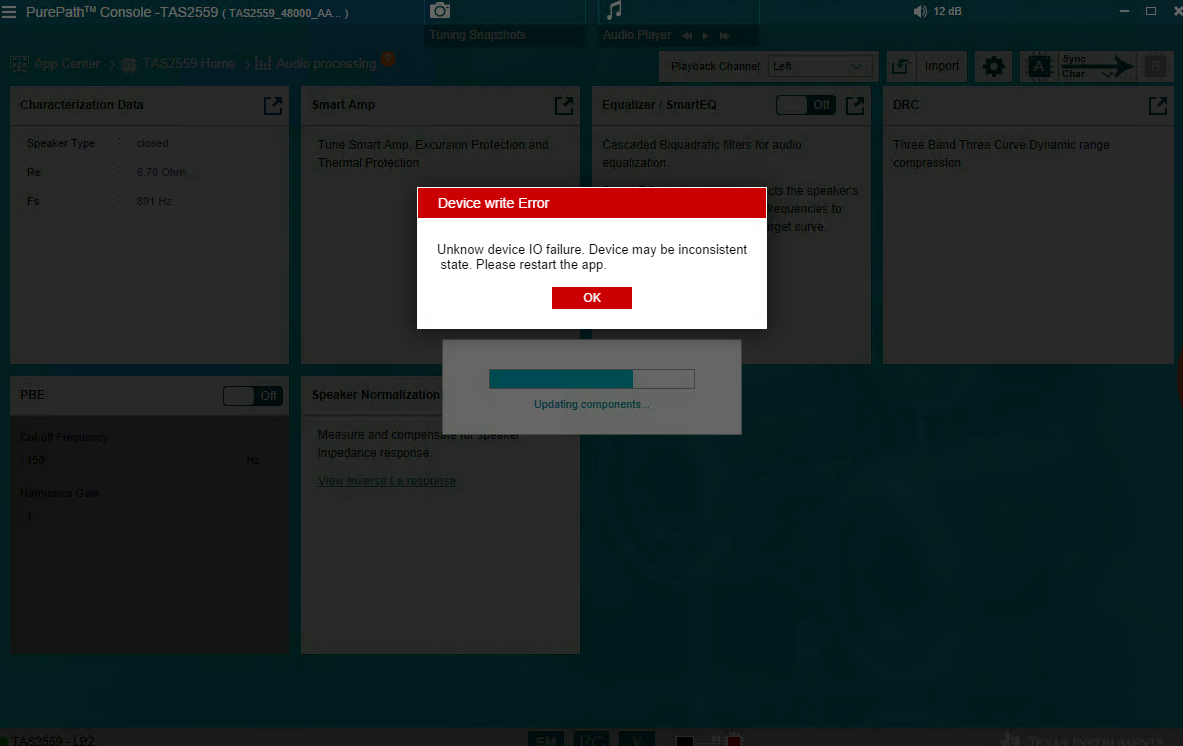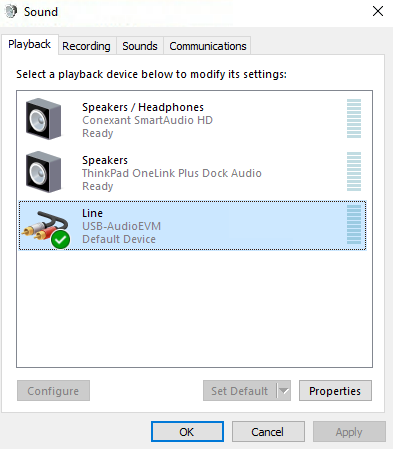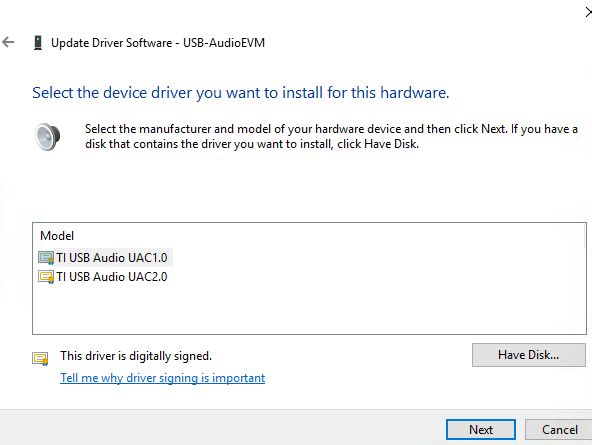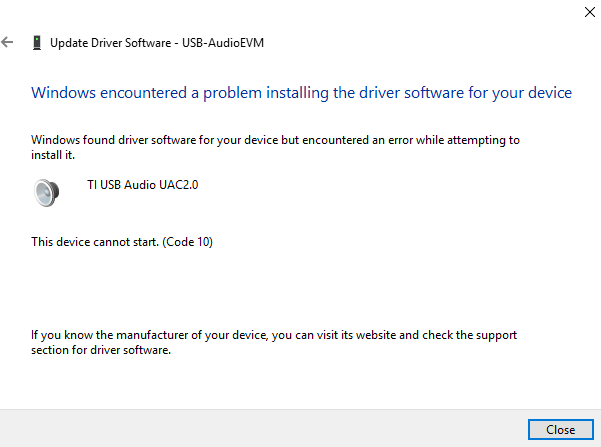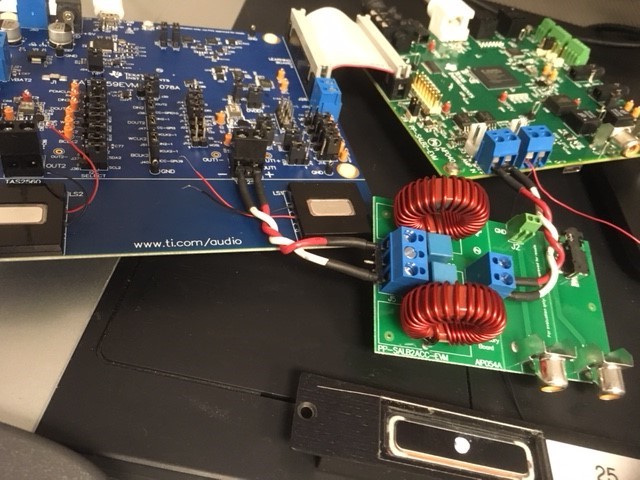Other Parts Discussed in Thread: PP-SALB2-EVM, , TAS2555
Hi,
I am connecting TAS2559 EVM connected to my laptop and ran purepath console.
It fails frequently with hardware test at 'Unable to playback audio from device A' and 'Unable to playback audio from device B'. I reconnected the board or reset Windows but the same result. It spits fail message even when the test tone is heard from the speakers. And when I play back any audio from Windows it sounds well but purepath says fail message.
There has been successful hardware checks very rarely. Even when it is the case, if I go to Audio Processing panel, it takes forever to update components. It sometimes gives an error 'unknown device IO failure. Device maybe inconsistent sate. Please restart the app.'
I have learning board 'PP-SALB2-EVM' together. Whether it's connected to the learning board or not, the same error I get. And I also cannot find any user guide or information or apps for this learning board.


